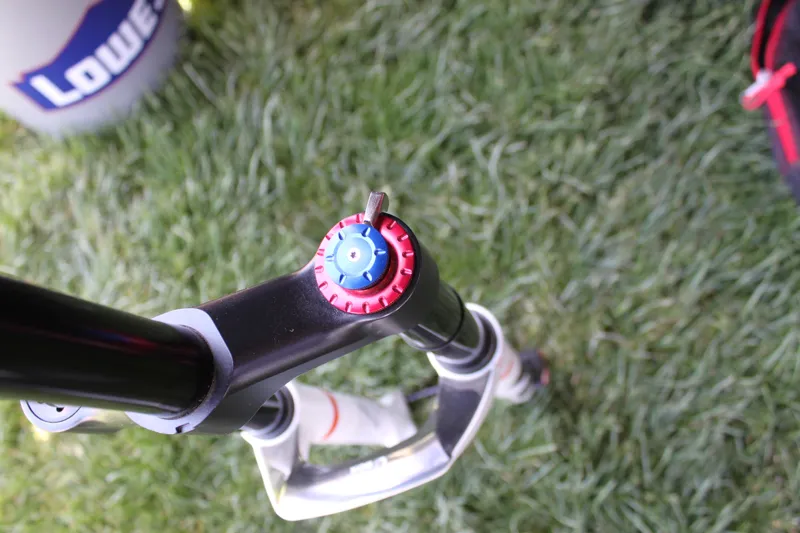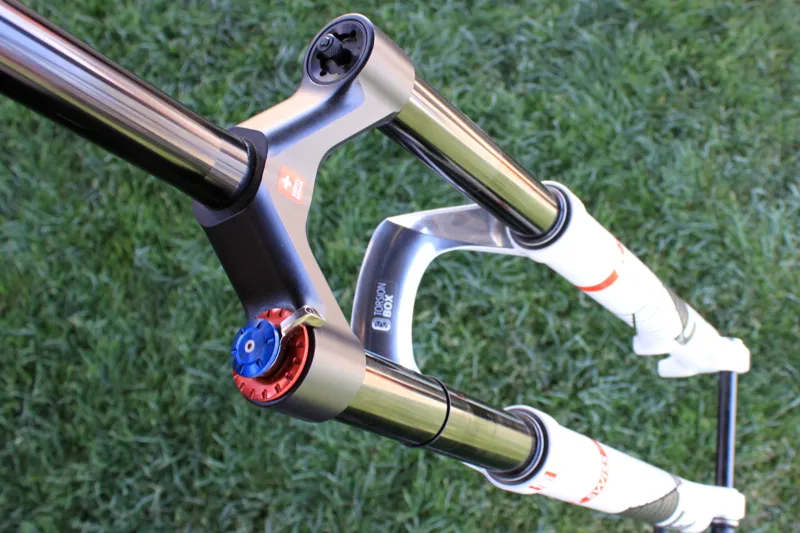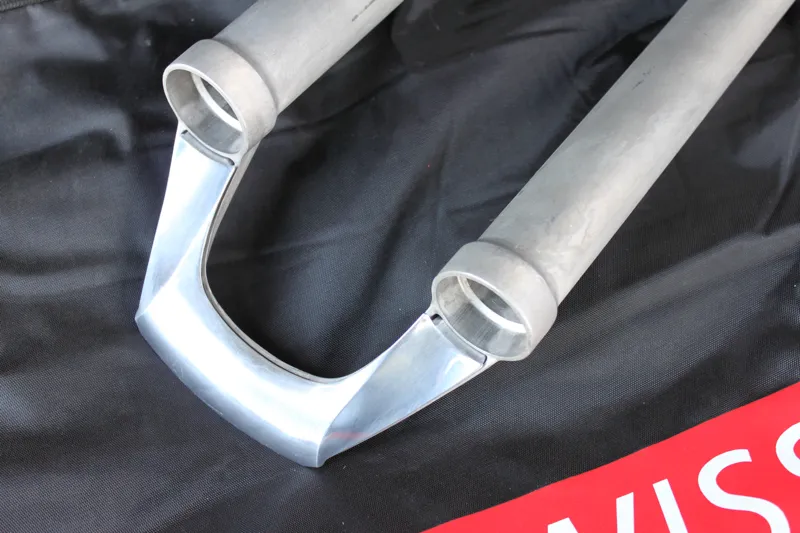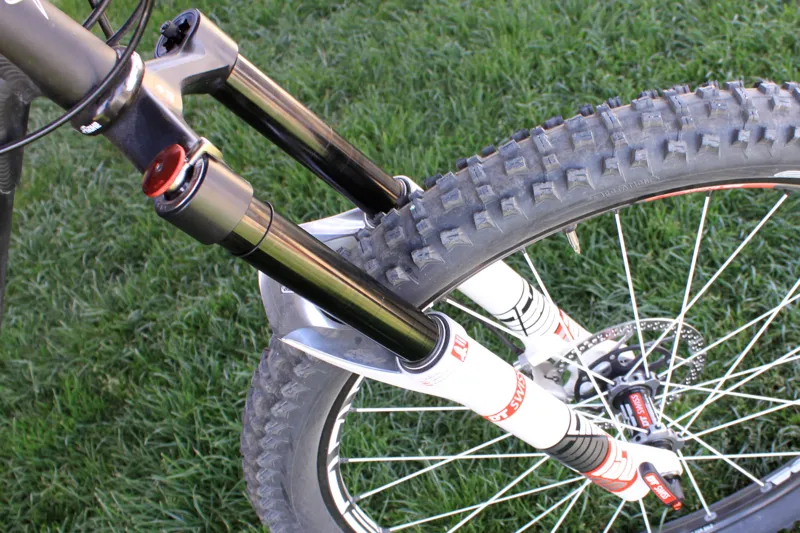The suspension engineers at DT Swiss have come up with two refinements to the company’s dampers for 2010 as well as new magnesium lower legs for their forks. The biggest news, however, is the new affordability that the latter development brings.
Chassis upgrade, cost downgrade: Torsion Box magnesium lowers
In the past, DT's forks have come in at high pricepoints because of the production cost of their Hollow Arch carbon lower legs. “We’ve only done carbon in the past and they’ve always been $1,300-$1,500, so rather pricy,” Paul Guebara, DT Swiss's marketing manager for the US, told BikeRadar. “Now everything [in the trail/enduro line] will be in the $600-$1,000 range, even with the carbon lowers.”

The Torsion Box two-piece cast magnesium lower design
The new Torsion Box lower legs are cast out of two pieces of magnesium. They are press fitted and offer better stiffness than one-piece legs and DT’s previous carbon lowers, but at a much lower price. The only cost is a 60g to 100g weight gain; for example, the XMC 100mm Race carbon model weighs 1,440g versus the new XMM magnesium version at 1,490g.
The Hollow Arch carbon lower option is still available on XMC and EXC fork models for weight conscious riders with deep pockets. DT offer either 9mm open or 15QR compatibility with all of their marathon and enduro forks.
New Dampers: Twin Shot and Launch Control II
DT are offering their new Twin Shot damper on their XMM 32mm (upper tube dimension) marathon forks with travel of 100mm, 120mm and 140mm. The new cartridge uses less oil than DT’s previous damper and is said to dissipate heat better.
It offers external adjustments for low-speed compression (16 clicks), rebound and two levels of lockout – a heavily damped rebound setting that reduces the fork’s travel while still offering some bump absorbing ability, or complete lockout. High-speed rebound and compression is controlled internally by shim stack.
The Twin Shot damper is compatible with DT’s handlebar remote. Engineers paid special attention to improving the feel of the leg-mounted adjustments, so they now have audible clicks and large, easy to use knobs.

DT Swiss engineers worked hard to make the 2011 forks' adjustments easier to use
“One of the big complaints on our last round of forks was that there wasn’t any indexing,” said Guebara. “That’s something the Swiss made a point of doing; making both measurement stops and firm clicks.”
Launch Control II
On DT’s longer travel (130mm and 150mm) EXM trail forks, also based on a 32mm chassis, a new Launch Control II damper offers refinements to the company's lockdown climbing aid with automatic blow-off. As with the Twin Shot, DT have improved the feel of the adjusters.
The new damper offers a lever that allows riders to select the level of the launch control blow-off. That setting remains constant, while the big red top cap acts as the on/off button (pull up for activation) for the system.
Once turned on it remains locked down until it encounters a bump force that pushes through the blow-off, opening the fork to its full range of travel. The damper also has a new high-speed compression circuit and wider range of both low-speed compression and rebound adjustment.

The new EXM fork features a revised Launch Control II damper
All of DT’s XMM and EXM forks use their ABS air spring system, which is a single-fill valve that automatically balances positive and negative air pressure. DT consider it ‘very linear’ which complements their new dampers’ refined low- and high-speed compression damping.


